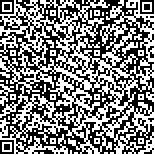| 摘要: |
| [摘要] 目的 观察高迁移率族蛋白1(high mobility group box-1 protein,HMGB1)在人IgA肾病肾组织中是否表达及尿HMGB1与病理的关系,分析其预测IgA肾病病理严重程度可能性。方法 肾穿刺活检300例,其中112例确诊IgA肾病,另188例为非IgA肾病。收集患者临床资料,测定尿HMGB1水平,对肾脏病理半定量评分,通过ROC曲线分析HMGB1对病理严重程度的预测效能。结果 (1)IgA肾病患者平均尿HMGB1浓度为(1.5268±0.7116)mg/μmol Cr;(2)在肾小管、间质、小球细胞核均有HMGB1表达,且不同病变程度中HMGB1表达范围和程度不同;(3)尿中HMGB1浓度预测(最佳切值1.8191 mg/μmol Cr,95%CI=1.2573~2.2622)严重系膜增生的曲线下面积为0.738(95%CI=0.646~0.818),敏感度为70.0%,特异度为77.8%;尿中HMGB1浓度预测(最佳切值1.4954 mg/μmol Cr,95%CI=1.3162~1.7392)严重球性硬化的曲线下面积为0.842(95%CI=0.760~0.904),敏感度为95.8%,特异度为67.4%;尿中HMGB1浓度预测(最佳切值1.4645 mg/μmol Cr,95%CI=1.3495~1.4645)严重小管间质损伤的曲线下面积为0.827(95%CI=0.743~0.892),敏感度为96.6%,特异度为67.9%(P<0.05)。结论 尿HMGB1水平与IgA肾病的系膜细胞的增殖、球性硬化和小管间质损伤密切相关,尿中HMGB1的表达可作为预测IgA肾病病理严重程度的潜在生物学标记物之一。 |
| 关键词: 高迁移率族蛋白1 IgA肾病 预后 |
| DOI:10.3969/j.issn.1674-3806.2017.11.01 |
| 分类号:R 58 |
| 基金项目:贵州省卫计委科学技术基金项目(编号:gzwkj2014-2-133);贵州省科技厅-贵州省人民医院科技联合基金项目[编号:黔科合LH字(2016)7171] |
|
| Urinary HMGB1 is a biomark to predict the severity of renal histological lesions in IgA nephropathy |
|
LIN Xin, YIN Lin, LIU Juan, et al.
|
|
Department of Nephrology, the People′s Hospital of Guizhou Province, Guiyang 550002, China
|
| Abstract: |
| [Abstract] Objective To observe the expression of high mobility group box-1 protein(HMGB1) in the renal tissues of the patients with IgA nephropathy and the relationship between urinary HMGB1 and pathology, and to explore the prediction effect of HMGB1 on the severity of renal histological lesions in IgA nephropathy.Methods 300 patients received renal biopsy, among whom 112 cases were diagnosed with IgA nephropathy and 188 cases with non-IgA nephropathy. The clinical data were collected and the levels of HMGB1 were measured. The semi-quantitative score of renal pathology was recorded and the predictive efficiency of HMGB1 was analyzed by ROC curve.Results (1)The average urinary HMGB1 concentration of the patients with IgA nephropathy was (1.5268±0.7116)mg/μmol Cr. (2) The HMGB1 expressions were found in the renal tubules, interstitial and glomerular cell nuclei, and the expressions varies with different severe lesions and ranges. (3)When the urinary HMGB1 was used to predict the severe mesangial cellularity(optimal cut-off 1.8191 mg/μmol Cr, 95%CI=1.2573~2.2622), the area of receiver operating characteristic curve(AUROC) was 0.738(95%CI=0.646~0.818) with a sensitivity of 70.0% and a specificity of 77.8%. When the urinary HMGB1 was used to predict the severe glomerulosclerosis(optimal cut-off 1.4954 mg/μmol Cr, 95%CI=1.3162~1.7392), the AUROC was 0.842(95%CI=0.760~0.904) with a sensitivity of 95.8% and a specificity of 67.4%. When the urinary HMGB1 was used to predict the severe tubule-interstitial damage(optimal cut-off 1.4645 mg/μmol Cr, 95%CI=1.3495~1.4645), the AUROC was 0.827 (95%CI=0.743~0.892), with a sensitivity of 96.6% and a specificity of 67.9%(P<0.05).Conclusion The levels of urinary HMGB1 are closely related to the mesangial cellularity, glomerulosclerosis and tubule-interstitial damage in IgA nephropathy, which might be used as one of the potential biomarkers for determining the pathological severity of IgA nephropathy. |
| Key words: High mobility group box-1 protein(HMGB1) IgA nephropathy Prognosis |

